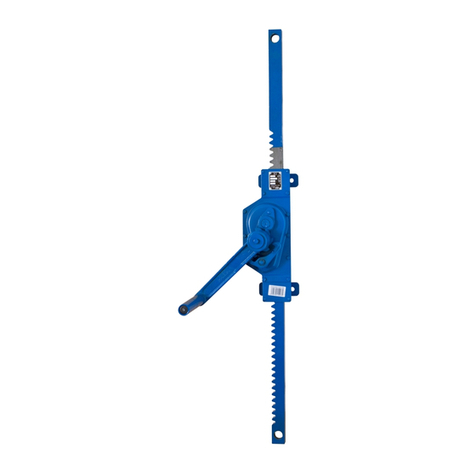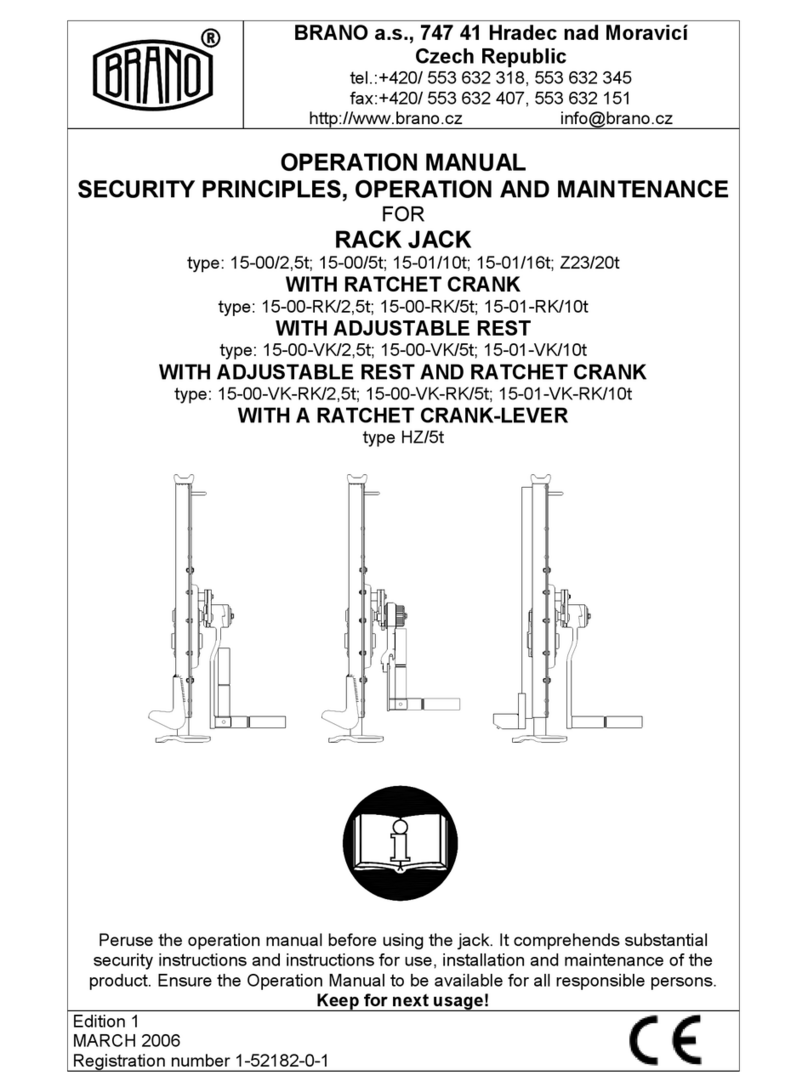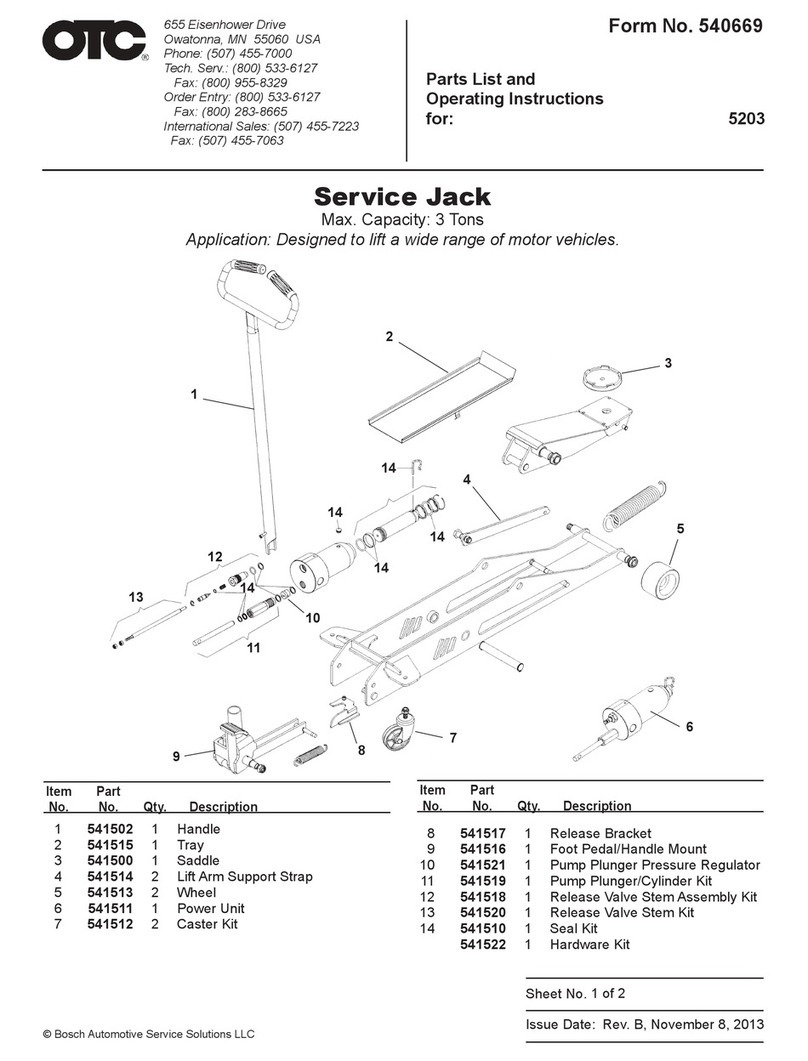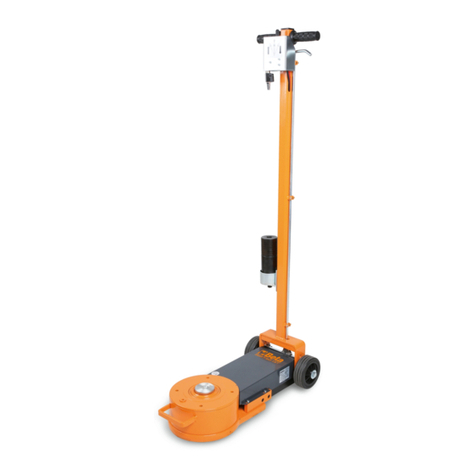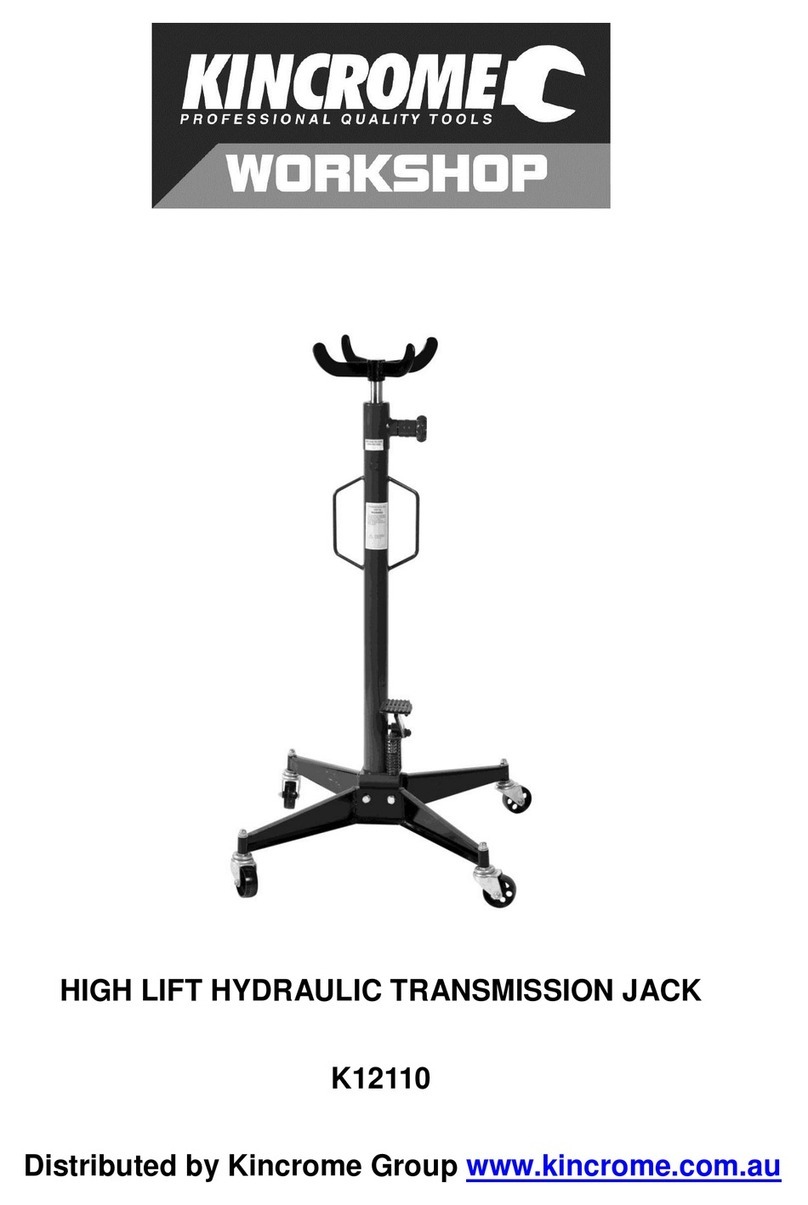Brano 15-00 User manual

translation of the original instructions for use (also applies to special designs)
BRANO a.s., 747 41 Hradec nad Moravicí
the Czech Republic
tel.: +420/ 553 632 303
http://www.brano-zz.cz; http://www.brano.eu;
OPERATION MANUAL
SECURITY PRINCIPLES, OPERATION AND MAINTENANCE
FOR
RACK JACK
Type
15-00
load capacity
2,5t
and
5t
Type
15-01
load capacity
10t
and
16t
Type
Z23
load capacity
20t
DESIGN WITH RATCHET CRANK – RK
DESIGN WITH RATCHET HANDLE-LEVER – RKP
DESIGN WITH ADJUSTABLE SUPPORT – VK
DESIGNED IN EXPLOSIVE ENVIRONMENTS – NEXP
Peruse the operation manual before using the jack. It comprehends substantial
security instructions and instructions for use, installation and maintenance of the
product. Ensure the Operation Manual to be available for all responsible persons.
Keep for next usage!
Edition 8
JANUARY
2021
Registration number 1
-
5
2182
-
0
-
1

2
CONTENT
1
DEFINITION ............................................................................................................ 3
2
DEVICE
PURPOSE ................................................................................................. 3
3
SECURITY
PRINCIPLES......................................................................................... 4
3.1 SECURITY PRINCIPLES OVERVIEW ............................................................................ 4
3.2. SECURITY PRINCIPLES ............................................................................................... 4
3.2.1 Prior to use................................................................................................................... 4
3.2.2 When in use ................................................................................................................. 5
3.2.3 After use....................................................................................................................... 5
3.2.4 Risk analysis ................................................................................................................ 5
3.2.5 Maintenance................................................................................................................. 5
4
PACKING,
STORAGE
AND
HANDLING.................................................................. 5
4.1 PACKING ........................................................................................................................ 5
4.2 STORAGE....................................................................................................................... 6
4.3 HANDLING...................................................................................................................... 6
5
MAIN
SPECIFICATIONS ......................................................................................... 6
5.1 MECHANICAL DEVICE................................................................................................... 8
5.2. MATERIAL AND FINISH ................................................................................................ 8
5.3 DATA ON THE PRODUCT.............................................................................................. 9
6
JACK
OPERATION.................................................................................................. 9
6.1 JACK OPERATION INSTRUCTIONS.............................................................................. 9
6.2 REST ADJUSTMENT.....................................................................................................10
6.3 RATCHET CRANK OPERATION AND THE RATCHET CRANK-LEVER .......................10
6.4 BEARING SURFACE CHECK-UP /floor, rough ground/ .................................................11
6.5 TEST PRIOR TO USE....................................................................................................11
7
OPERATION...........................................................................................................11
7.1 APPLICATION OF THE JACK........................................................................................11
7.2 SAFETY WORK ENVIRONMENT ..................................................................................12
8
CHECK-UP
ON
THE
JACK .....................................................................................12
8.1 INSPECTION .................................................................................................................12
8.1.1 Inspections types.........................................................................................................12
8.1.2 Daily inspection ...........................................................................................................13
8.1.3 Regular inspection.......................................................................................................13
8.1.4 Jack occasionally used................................................................................................13
8.1.5 Report on inspection....................................................................................................13
8.2 INSPECTION PROCEDURE..........................................................................................13
9
TROUBLE-SHOOTING...........................................................................................14
10
GREASING...........................................................................................................15
10.1 GENERALLY................................................................................................................15
10.2 JACK MECHANISM .....................................................................................................15
11
MAINTENANCE....................................................................................................15
11.1 SECURITY PRINCIPLES .............................................................................................15
11.2 REPLACEMENT OF BRAKE INSERTS AND BRAKE ADJUSTING .............................16
11.2.1 Brake disassembly (fig. 6) .........................................................................................16
11.2.2 Brake assembly and adjusting (figures 6 and 7) ........................................................16
11.3 BEARINGS...................................................................................................................16
11.4 GENERAL INSTRUCTIONS.........................................................................................16
11.5 CHECK UP...................................................................................................................17
11.6 REPAIR........................................................................................................................17
11.7 TEST............................................................................................................................17
12
PUTTING
OUT
OF
OPERATION
–
LIQUIDATION................................................17
13
LATED
DOCUMENTATION..................................................................................17
14
FINAL
REQUIREMENTS
OF
THE
PRODUCER
TO
THE
CUSTOMER ................17

3
1 DEFINITION
! HAZARD
Hazard:
it adverts to an imminent hazardous situation, which will inflict
death or serious injury, if the operation personnel will not avoid it.
! WARNING
Warning:
it adverts to a possible hazardous situation, which could
inflict death or serious injury, if the operation personnel will not avoid it.
! NOTICE
Notice: it adverts to a possible hazardous situation, which could
inflict any minor or slight injury, if the operation personnel will not
avoid it. The notice can warn against hazardous practices as well.
Load capacity (Q): is the maximum permitted weight (working load limit) of a load on
the jack head, by which the jack is possible to be loaded when handling on conditions
specified in this Operation Manual.
Load capacity (Q1): is the maximum permitted weight (working load limit) of a load
on the rest, by which the jack is possible to be loaded when handling on conditions
specified in this Operation Manual.
2 DEVICE PURPOSE
2.1 The rack jack type 15-00 load capacity 2,5t and 5t, 15-01 load capacity 10t and
16t, Z23 load capacity 20t in any combination of design (-RK, -RKP, -VK) and in
design for potentially explosive atmospheres -NEXP (hereinafter referred to as
product or NEXP= structurally identical product, differing in surface protection of
selected parts, marking plate material and documentation) is designed entirely for
manual raising, lowering and pushing of free loads in the workplace. The load weight
when raising does not have to exceed specified permitted load capacity.
2.2 The product has been designed in compliance with the requirements
stipulated by Directive 2006/42/EC of the European Parliament and of the Council, as
amended by the Czech technical regulation – Government Directive No. 176/2008
Coll., as amended, and the requirements of the harmonized Czech technical
standards ČSN EN ISO 12100 and ČSN EN 1494+A1.
2.3 The product has been designed in compliance with the requirements
stipulated by Directive 2014/34/EU of the European Parliament and of the Council, as
amended by the Czech technical regulation – Government Directive No. 116/2016
Coll., as amended. The product has been designed as IM2ExhIMb equipment
pursuant to EN ISO 80079-36:2016 and EN ISO 80079-37:2016. It complies with the
conditions stipulated for use in mining environments classed as “hazardous
atmospheric conditions 2” pursuant to ČSN EN 1127-2.
2.4 The product has been designed in compliance with the requirements
stipulated by Directive 2014/34/EU of the European Parliament and of the Council, as
amended by the Czech technical regulation – Government Directive No. 116/2016
Coll., as amended. The product has been designed as II2GExhIICT6Gb,
II2DExhIIICT85°CDb equipment pursuant to EN ISO 80079-36:2016 and EN ISO
80079-37:2016. It complies with the conditions stipulated for use in environments
classed as „zone 1 and zone 21“, “zone 2 and zone 22“ pursuant to ČSN EN 1127-1.
Note: Articles 2.3 and 2.4 apply to NEXP product design.

4
3 SECURITY PRINCIPLES
3.1
SECURITY
PRINCIPLES
OVERVIEW
A hazard exists when handling loads especially in the event that the jack is not use in
the right way or is badly maintained. Whereas as a result an accident or severe injury
could happen, it is necessary to observe the special security measures when
handling, assembling, maintaining and checking the jack.
! WARNING
ALWAYS ensure the load against drop (i.e. by a stand or jack block), if you are
going to work under it.
NEVER burden the jack more than is the load capacity indicated on the jack.
NEVER jack up persons.
ALWAYS warn persons in surroundings before starting work.
ALWAYS read the operation manual and security instructions.
Bear in mind that the operation staff is responsible for faultless technique of raising loads.
Hence verify all national directives, regulations
and standards whether they contain other
information on safety work with your jack.
3.2.
SECURITY
PRINCIPLES
! WARNING
3.2.1 Prior to use
ALWAYS ensure the jack would be operated by physically fit, qualified and
instructed persons older than 18 years, familiarized with the operation
manual and trained in security of work and mode of operation.
ALWAYS check up the jack every day before starting work according to section
8.2. (1) „Daily inspection“.
ALWAYS make sure that the lift is adequate for intended work.
ALWAYS respect the jack is on firm foundation.
NEVER jack up loads well set or of unknown weight.
NEVER push with the jack without knowledge of expansion forces.
NEVER use the defective or outworn jack.
NEVER use the jack without visible load capacity marking on the jack.
NEVER use the jack marked with the label „OUT OF OPERATION“.
ALWAYS consult the producer or his authorized representative any application of
the jack in nonstandard or extreme environment
ALWAYS check that the product is grounded through the ground terminal when
working in an explosive atmosphere
ALWAYS wipe off any dust before handling the product in an explosive atmospher

5
3.2.2 When in use
ALWAYS attend to the jack would stay vertically when jacking up.
ALWAYS make sure that the foot of the comb bar rests on the ground with the
entire contact surface.
ALWAYS make sure the load is fitly put on the jack.
ALWAYS pay increased attention, if the jack is drawn up to maximum position.
ALWAYS work with the jack only with manpower.
ALWAYS when jacking up loads with a weight oncoming safe working load of the
hoist we recommend the operation would be ensured by two persons
owing to magnitude of actuating forces.
NEVER use the jack for anchoring of loads.
NEVER allow the load would give rise to impacts or vibrations.
3.2.3 After use
ALWAYS ensure the jack against incompetent use.
3.2.4 Risk analysis
The possible risks analysis in light of design, operation and environment of the jack
appointment is presented in freestanding document „Risk analysis“. It is possible to
require the document in service centers.
3.2.5 Maintenance
ALWAYS make possible to competent persons to carry out the regular inspection
of the jack.
ALWAYS ensure slipping parts would be sufficiently greased.
At maintenance only such interventions can be done that will be in accordance with
producer’s requirements stated in the chapter 11 and 14 of this OM.
IT IS NOT PERMITTED to carry out repairs and maintenance in other manner than
specified by the producer. It concerns namely the forbiddance of using of unoriginal
spare parts or carrying out changes on the product without the approval of the
producer.
4 PACKING, STORAGE AND HANDLING
4.1
PACKING
4.1.1 Jacks are supplied in assembled state in bulk in transport cases.
4.1.2 The following accompanying documentation is a part of the delivery:
a) Operation Manual
b) EC Declaration of Conformity
c) Quality and Completeness Certificates and Guarantee Certificate.
c1) Guarantee period is stated in the Guarantee Certificate.
c2) The guarantee does not apply to defects caused by infringement of the
instructions stated in the Operation Manual and defects arisen by
improper using and unskilled action.
c3) The guarantee does not apply as well to changes on the product or
using of unoriginal spare parts without the approval of the producer.

6
c4) A claim for defects in the product must be applied according to the
relevant provisions of the Commercial Code or the Civil Code, as
amended.
d) List of service centers.
4.2
STORAGE
Store jacks in dry and clean stores void of chemical impacts and noxious fumes.
(1) Wipe away all dust, water and impurities from the jack.
(2) Grease the rack of the jack.
(3) Put the jack in a dry place.
(4) In next using follow instructions in the article 8.1.4 „Jack occasionally used“.
4.3
HANDLING
During transportation and handling, observe technical regulations and standards in
force for work with heavy loads.
5 MAIN SPECIFICATIONS
The technical parameters of the product in the "NEXP" design for all types, load
capacities, designs correspond to the parameters of the standard product design.
E.g. product parameters 15-01-NEXP/10t correspond to product parameters 15-
01/10t.
Type-design
Load
capacity
(t)
Actuating
force on
crank
(N)
Main dimensions (mm)
Weight
(kg)
Q Q
1
a b b
1
q h
min
L
min
r Z
15-00
2,5
1,75
380
175
200
200
60
75
735
250
345
15
15
-
00
-
RK
16
15-00-VK
250
16
15
-
00
-
VK
-
RK
17
15-00-RKP 380
1)
230
2)
230
19
15-00-VK-RKP 265
20
15-00
5 3,5
550
200
235
200
70
85
765
300
360
22
15
-
00
-
RK
215
23
15
-
00
-
VK
275
23
15-00-VK-RK 250
24
15-00-RKP 550
1)
330
2)
250 24
15-00-VK-RKP 285 26
15-01
10
7
540
245
290
200
80
90
795
300
320
38
15
-
01
-
RK
280
39
15-01-VK 325
140
41
15
-
01
-
VK
-
RK
315
42
15-01-RKP 10
540
1)
320
2)
305
9
0
40
15-01-VK-RKP 10
335
140
43
15-01 16
11,2
730 280 315
280
77 160
900
400
320 65
Z23
20
14
800
325
330
280
77
150
960
400
300
90
Working temperature range
-
20°
až +5
0°
1)
Handle in position “crank”
2)
Handle in position “lever”

7
Main dimensions design - VK
Type-design
Load
capacity
(t
)
P (mm)
R (mm)
O
15-01-VK
2
,5
540
90
6
15-01-VK
5
540
90
6
15-01-VK
10 500 100 5
Main dimensions – all type
Main dimensions – design - RKP
Q
Q
q
r
Z
min.
h
a
b
1
b
Fig.1
Fig. 2
Fig. 3
Position transport
Position lever
Position crank
Overloading safety
L
min.
a
h
min.
Z
q
Q
Q
q
Z
Q
min.
h
Q
bb
1
b
1
b
r

8
5.1
MECHANICAL
DEVICE
Safety and working life of the jack is guaranteed if it works in accordance with
specified classification.
The jack is designed for class 1Bm according to the FEM 9.511 regulation – see
table 5.1. (it corresponds to mechanism classification M3 according to the ISO
4301/1).
Average daily operating time is specified in the load diagram.
Tab. 5.1 MECHANICAL CLASSIFICATION
Load diagram
(l
oad distribution)
Definition Load coefficient Average daily
operating time (h)
1
(light)
Jacks usually being subject
to the low load and only in
special cases to the
maximum load.
k ≤0,50 1 - 2
2
(mean)
Jacks usually being subject
to the low load, but quite
often to the maximum load.
0,50 < k ≤0,63 0,5 - 1
3
(heavy)
Jacks usually being subject
to the mean load, but
frequently to the maximum
load.
0,63 < k ≤0,80 0,25 – 0,5
4
(very heavy)
Jacks usually being subject
to the maximum load or load
approximating to the
maximum.
0,80 < k ≤1,00 0,12 – 0,25
Load diagram Load diagram Load diagram Load diagram
1 2 3 4
Percentage of operating time
5.2.
MATERIAL
AND
FINISH
5.2.1 All parts of the jack are manufactured from steel and cast iron, the brake liners
from hardened woven fabric.
5.2.2. Materials inclinable to creation of an incendiary spark in terms of the annex
No. 2 article 1.3.1 to the ministerial order No. 116/2016 of the Coll. of Laws
and the ČSN EN 1127-2 article 6.4.4 ČSN EN 1127-1 article 6.4.4 and EN ISO
80079-36 article 6.4.2.1 harmonized technical standards are not used.
5.2.3. Materials with dangerous effects of static electricity within the meaning of the
ČSN EN 1127-2 article 6.4.7, ČSN EN 1127-1 article 6.4.7, EN ISO 80079-36
article 6.7 and ČSN ČSN CLC/TR 60079-32-1 are not used in the chain block.

9
5.2.4 The jack does not exceed the noise value specified in the Annex No.1 article
1.7.4.2 letter u of the ministerial order No. 176/2008 of the Collection of Law
(EP and RE directive No. 2006/42/EC).
Note: Articles 5.2.2 and 5.2.3 3 apply to NEXP product design.
5.3
DATA
ON
THE
PRODUCT
Each product is equipped with the label with specified data as follows:
Stand
ard finish:
NEXP product d
e
sign
:
Mark of the producer
Mark of the producer
Address of the producer
Address of the producer
Product type
Product type
Load capacity
Load capacity
Serial numbe
r
Ser
ial numbe
r
Pro
duction year
Production year
CE marki
ng
CE marking
Protection type symbol (IM2ExhIMb for group I, II2GExhIICT6Gb
and
II2
D
Ex
h
I
II
C
T
85
°C
D
b
for group II
)
6 JACK OPERATION
! WARNING
ALWAYS before installation check up thoroughly whether the jack is not
damaged.
ALWAYS safeguard the jack against drop at pushing or spreading out of loads
(i.e. in horizontal direction). A drop can take place when shifting the load
and thereby unloading and releasing the jack. Every such handling is
necessary to be appreciated individually in terms of safety.
NEVER the load weight or resultant pushing force on the head must not exceed the
safe working load of the jack.
The NEXP product must be installed in such a way as to prevent creeping charges.
Charging mechanisms stronger than manual friction must be avoided at the
installation site.
A NEXP product when used in a mine or other environment where the product could
collide with falling, flying… objects (rock, stones…) must be protected to minimize the
likelihood of a collision (sufficiently dimensioned cover, …).
! NOTICE
The jack safe working load on the rest is decreased by 30%.
6.1
JACK
OPERATION
INSTRUCTIONS
The jack is operated by the crank. Raising or lowering the load can be cut off in any
lifting height. A lowering brake and pawl system with forced mesh in the jack crank
safeguard the stability of the load position.
! NOTICE
At actuating force greater than 400N (it means when handling with the jack at
the safe load limit) the jack must be operated by 2 persons at least.

10
1
2
Lowering
position
Lifting
position
Neutral
position
6.2 REST ADJUSTMENT
(only design - VK).
Position of the adjustable rest can be changed in the
range given by a number of mounting positions on the
jack bar (see fig.1)
After removal of the breaking piece (2) and shifting of
the rest in the direction indicated by an arrow,
fastening pin (1). 2 get loose in the jack bar and rest
can be put out. Carry out rest fitting-on to other position
by opposite procedure.
6.3
RATCHET
CRANK
OPERATION
AND
THE
RATCHET
CRANK-LEVER
(only design – RK and – RKP).
6.3.1 Raising or lowering
Before raising hitch up the
changeover lever and set on the
mark of raising – up-arrow (see fig.5).
Carry out the raising by oscillating
(eventually rotation) motion of the
ratchet crank.
At the beginning of the raising before
the loading of the rack jack will take
place, hold the knurled nut so that it
would not be carried away by the
crank at its backwards motion.
Before lowering the load, shift the changeover lever to the position on the lowering
mark – down arrow (see fig.5). Lower down the load by oscillating (eventually
rotation) motion of the ratchet crank.
Make sure at each change of the position of the changeover lever, whether the lever
gets fitly to the socket in the ratchet crank.
First motion of the ratchet crank after reversing (after shifting of the changeover
lever) is slightly blocked. This state arises by an influence of stronger follow-through
of the brake namely at manipulation with heavier loads. In this case release the brake
by more point-blank motion, thereby you will coincidently release the ratchet crank.
6.3.2 Ratchet crank-lever
The manipulation with the ratchet crank-lever during the lifting and lowering of loads
is performed in the same way as is stated in article 6.3.1 and 6.3.2.
The ratchet crank is changed to an extended lever by folding the crank-lever handle
by 90
0
(into the lever position - see fig.3). We use this position for decreasing the
control force during the manipulation with loads that are close to the nominal lifting
capacity of the lifter.
The ratchet crank-lever is equipped with a safety shear pin against overloading (see
fig.3)
If the shear pin is sheared during the manipulation with a load, it is still possible to
lower the load even if the shear pin is sheared (after moving the reverse lever to the
lowering position).
Fig. 4
Fig. 5

11
POUŽITÍ VE VODOROVNÉ POLOZE
Fixace omocí otvoru v atce
Abb. 5
Application in horizontal position
Fastening by the help of the opening in foot
! WARNING
NEVER extend the lever’s arm with a pipe or by any other method. The lever might
get damaged
! NOTICE
The ratchet crank and also the ratchet crank-lever is interchangeable with a standard
crank of correspondent type of jack. In case of replacement of the standard crank
with the RK 300 ratchet crank at jack with load capacity 5t it is necessary before
assembling to put on the square shank of the crank pinion the spacing tube – it is a
part of delivery of the RK 300 ratchet crank– for safeguarding the correct position of
the ratchet crank on the jack.
6.4 BEARING SURFACE CHECK-UP /floor, rough ground/
! NOTICE
ALWAYS make sure that the bearing surface is sufficiently firm to hold tightly
supposed loading for all time of handling. The installation must not be
carried out on the surface where it is not possible to determine the load-
bearing capacity or that is instable.
ALWAYS the operation personnel are responsible for the set-up!
6.5 TEST PRIOR TO USE
! NOTICE
(1) At first read again the previous articles of this manual and make sure that all steps
were correctly done and all parts are safety mounted.
(2) Visually check the jack and bearing surface whether they are without defects.
(3) Put to proof the jack function by the motion of the crank without loading.
(4) Carry out several jacking up and lowering with the suitable load (10% till 50% of the
load capacity). At the same time verify, whether the jack will hold firmly the load
without slipping when lowering and stopping.
7 OPERATION
7.1 APPLICATION OF THE JACK
7.1.1 The jack is multifunctional equipment destined for manual jacking up, lowering,
pushing and spreading of subjects in the workplace determined by the user. It
can be used not only in a current environment, but also in environments with
explosion risk in the event that there
is the symbol of the
protection type marked on
the label – see articles
2.3, 2.4 and 5.3 of this
OM. The lifters type 15-00
(load capacity 2,5 and 5t)
have an opening in the
foot which simplifies work
when pushing apart
objects above head
height. The lifter’s foot can
be easily attached in the
required position by using
a screw for example, without the need to use a helper. (fig. 6)
Fig. 6

12
7.1.2 By reason that the work with heavy loads can constitute unexpected hazard it is
necessary to follow all „Security principles“ according to the chapter 3 of this
OM.
7.2 SAFETY WORK ENVIRONMENT
! Warning
(1) The operating personnel must be demonstrably acquainted with this Operation
Manual; they must adhere to valid security and hygienic regulations and must be
qualified for operation of this equipment.
(2) When working with the jack the operation staff must be equipped with gloves and
appropriate footwear.
(3) When operating by more persons always one worker must be determined who is
trained in safety at work and is responsible for jack handling.
(4) Before starting the work, the operation staff must check up whether all work area
is safety and whether there is the possibility of eventual escape from the
environment of jeopardy.
(5) With a product load capacity of 2,5t and 5t, the cover with the product casing is
not sufficiently dimensioned in terms of "breakthrough", therefore any cover that
could cause a collision with gears must be repaired or replaced. If the product
collides with a falling, flying (object (rock slide…) that could sufficiently damage
the covers, work must be stopped immediately and the product inspected.
8 CHECK-UP ON THE JACK
8.1
INSPECTION
8.1.1 Inspections types
(1) Introductory inspection: it precedes first use. The responsible competent person
must check up all new or repaired jacks to ensure the qualified fulfillment of
requirements of this OM.
(2) The jack inspections carried out regularly are generally divided to two groups
according to inspections intervals. Intervals depend on the state of critical parts
of the jack and rate of wear, damage or malfunction. Two main groups are here
marked as daily and regular ones. The appropriate intervals are defined as
follows:
(a) Daily inspection: visual check up carried out by the operation staff determined
by the user that is made at the beginning of each use.
(b) Regular inspection: visual check up carried out by the competent person
determined by the user.
1) Current operation – once a year,
2) Heavy operation – every six month,
3) Special or occasional operation – according to recommendations of the
competent person at first use and according to the order of qualified employees
(maintenance workers).

13
8.1.2 Daily inspection
Check up at parts recommended in the section 8.2(1) „Daily inspection“, whether the
jacks are not damaged nor have no defect. Carry out this inspection also during
operation in the interval between regular inspections. Qualified employees will
determine, whether any defect or damage can constitute a hazard and whether the
detailed inspection is necessary.
8.1.3 Regular inspection
Carry out overall inspections of the jack in the form of recommended regular
inspections. The recommended regular inspection stated in the section 8.2(2) must
be performed under the supervision of the competent persons who will determine,
whether the jack is necessary to be taken to parts. These inspections comprise also
requirements of the daily inspection.
8.1.4 Jack occasionally used
(1) Submit the jack not being in operation for a period of one month or longer but less
than a year to inspection complying with requirements in the section 8.1.2 before
follow-up putting it into operation.
(2) Submit he jack not being in operation for a period of one year to inspection
complying with requirements in the section 8.1.3 before follow-up putting it into
operation.
8.1.5 Report on inspection
Keep the record of performed tests, inspections and maintenances of jacks every
time. Carry out dating reports on inspections in intervals specified in the section 8.1.1
(2)(b) and keep them in the place specified by the user.
The person responsible for safety and determined by the user must be advised of
defects detected by the inspection or recorded during the operation.
8.2 INSPECTION PROCEDURE
(1) Daily inspection (carried out by operating staff or person responsible)
Part Inspection method
Limit / criteria for
putting-out of
operation
Remedy
1. Jack function Visually,
aurally
The jack goes
hardly, stammers,
emits noise etc.
To clean up and
grease the jack. If
the defect will not
be removed, get the
jack repaired.
2. Pawls function Visual inspection
when jacking up
Pawls do not snap
behind dents of the
ratchet.
To clean up,
grease, eventually
change the spring.
3. Fixative parts
Visual inspection of
all screws, nuts,
rivets etc.
Faulty or missing
parts;
Released parts
Replace by new
ones;
To retighten
released parts

14
(2) Regular inspection (carried out by the competent person)
Part
Inspection
method
Limit / criteria for
putting-out of
operat
i
on
Remedy
1. Fixative parts
Visual inspection
of all screws, nuts,
rivets etc.
Faulty or missing
parts;
Released parts
Replace by new
ones;
To retighten
released parts
2. All parts Visual inspection Outworn or
damaged parts;
Fouled and
ungreased parts
Replace by new
ones;
To take to parts,
clean up, grease
and again assemble
3. Label – marking of
load capacity on the
jack
Visual inspection Load capacity is not
readable
To repair or replace
by new one
4. Brake Jack up and lower
the load with
weight equal
approximately to
the load capacity
of the jack
When interrupting
jacking up the brake
must hold firmly the
load in each
position during
raising and lowering
If it will not be so,
ask for repair and
adjusting of the
brake
9 TROUBLE-SHOOTING
Situation Cause of trouble Remedy
1. Jack does not hold firmly
the load.
Brake slipping. Brake adjusting or repair
according to the chapter
„Maintenance“.
2. Jack jacks up heavily or
does not raise the load.
(1) Jack is overloaded.
(2) Damaged geared
trans
m
ission.
(1) Lower the load weight
to the value of the safe
working load.
(2) Repair of the jack
3. Jack emits the special
noise.
Insufficiently greased
geared transmission.
Carry out the lubrication of
the geared transmissions
by grease.
4. Characteristic sound is
not heard when snapping
the pawls to dents of
ratchet.
Malfunction of pawls.
Rust, impurities, broken
spring.
Clean up, replace the
spring.

15
10 GREASING
10.1
GENERALLY
Before application of the grease remove old grease, clean up components with
grease solvent and apply new grease. Use grease specified by the producer.
Lifters of load capacity 2,5, 5 a 10t are equipped with a lubrication plug on the cover
of the gear transfer. We recommend regular lubrication of the gear mechanism at
least once every 6 months.
Use grease: Universal lithium plastic lubricant, water resistant, usable in a minimum
range of working temperatures from -20°C to +50°C. For example A2, LV2EP.
! WARNING
All lubricants (grease, oil) used in the NEXP version must have an ignition
temperature higher than 135°C. E.g. LV2EP, ….
10.2
JACK
MECHANISM
Lubricate products with a load capacity of 2,5t, 5t and 10t with a lubrication press via
a lubrication plug on the cover. For 16t and 20t products, slide the unloaded product
to the maximum position. Lubricate the comb bar and lower the product.
Grease all slipping or moveable surfaces on the crank of the jack.
! NOTICE
Imperfect maintenance and insufficient greasing can cause a serious accident.
ALWAYS grease more often in corrosive environment (salt water, oceanic
climate, acids etc.) than in ordinary circumstances.
11 MAINTENANCE
11.1 SECURITY PRINCIPLES
! Warning
Only qualified persons (service organizations), trained in safety and
maintenance of the jacks, can carry out maintenance and professional
inspections.
ALWAYS use entirely components supplied by the producer.
It is not permitted to carry out repairs and maintenance in other way than
specified by the producer. It means namely the forbiddance of using
unoriginal spare parts or carrying out of changes on the product without the
approval of the producer.
ALWAYS test jack function after carrying out the maintenance.
ALWAYS mark disabled or repaired jack with appropriate inscription (i.e. „OUT
OF OPERATION“).
NEVER carry out maintenance if there is the load on the jack.
NEVER work with the jack that is under repair!
ALWAYS when repairing the paint, it is necessary to observe the total thickness of
the paint layer maximum 0,2 mm (original + new paint, or after cleaning the
surface new paint, applies to NEXP product design).

16
7
6
5
4
2A
3
2B
1
11.2
REPLACEMENT
OF
BRAKE
INSERTS
AND
BRAKE
ADJUSTING
11.2.1 Brake disassembly (fig. 6)
Demount the (crank or crank-lever) from the jack. Unbolt safety screws (6) and
consequently the nut (5). Take out the spring (4) and crank arm (7). Take out from
the hub (1) the ratchet (3) with brake insert (2A), take off the brake insert (2B), and
replace both brake inserts (2A) (2B).
Fig. 6 Fig. 7
11.2.2 Brake assembly and adjusting (figures 6 and 7)
Proceed in the opposite way when assembling. Slip over the hub (1) the friction insert
(2B); ratchet (3) and second friction insert (2A). Set it in the crank arm (7), slide on
the spring (4) and screw on the nut (5). Tighten the nut so that the clearance in the
dent is from 4 to 6 mm (see fig. 5) and screw down the screws (6).
11.3 BEARINGS
Cast iron plain bearings are used in the product. The theoretical service life of
bearings is several times higher than the theoretical service life of the product.
Therefore, they do not need any special maintenance except for cleaning and
lubrication during the regular inspection interval, see 8.1. In the event that the
bearing is damaged during disassembly, assembly or due to dirt (sand, rock, dust ...)
entering the working space of the bearing, the bearing must be replaced immediately.
11.4 GENERAL INSTRUCTIONS
Following instructions give general important information on disassembly, check up,
repair and assembly. If the jack was dismounted from any reason act upon the
instructions as follows.
1. Perform maintenance in clean environment.
2. NEVER disassemble the jack more than it is necessary to carrying out the needful
repair.
3. NEVER use excessive power when dismantling parts.
4. NEVER use heat (fire) as the mean when dismantling parts, if the parts are
destined for next use.
5. Keep the workplace clean and without foreign materials that could get into
bearings and other movable parts.
6. If you squeeze the part in vice, use always the appropriate pads for protection of
parts surfaces.
4 till 6 m m

17
11.5 CHECK UP
Check up, whether all disassembled parts are suitable for next use.
1. Check up, whether no parts are worn out and have no chutes or fissures.
2. Check up, whether threaded parts have not the damaged thread.
11.6 REPAIR
Outworn or damaged parts must be replaced.
Remove little burrs and scratches or other minor surface defects and flatten out with
fine grinder or abrasive cloth.
11.7 TEST
The load test must be performed at all repaired jacks by qualified person with the
load exceeding the load capacity by 10% for verification of function and brake of the
jack.
12 PUTTING OUT OF OPERATION – LIQUIDATION
The jack do not contain any noxious agents, its parts are from steel and cast iron.
Hand over the jack after putting out of operation to the firm dealing with liquidation of
waste metal.
13 LATED DOCUMENTATION
of Law as amended
13.1 EC declaration of conformity
13.2 The Operation Manual was elaborated in accordance with following technical
regulations, technical standards and national regulations:
•Ministerial order No.176/2008 of the Collection of Law as amended (EP and
Council directive 2006/42/EC)
•Ministerial order No.116/2016 of the Collection of Law as amended (EP and
Council directive 2014/34/EU)
•ČSN EN ISO 12100
•ČSN EN 1494+A1
•ČSN EN 1127 - 2
•ČSN EN 1127 - 1
•ČSN EN ISO 80079-36
•ČSN EN ISO 80079-37
•Regulation of CBM (Czech Bureau of Mine) No.22/89 of the Collection of Law
•ČSN CLC/TR 60079-32-1
14 FINAL REQUIREMENTS OF THE PRODUCER TO THE
CUSTOMER
Any changes of the product, eventually usage of unoriginal spare parts can be
realized only based on the approval of the producer.
When not observing this condition the producer does not guarantee safety of
his product. In this case, any producer’s guarantees do not apply to the
product.
This manual suits for next models
12
Table of contents
Other Brano Jack manuals
Popular Jack manuals by other brands

Pro-Lift
Pro-Lift B-033D Operating instructions & parts manual
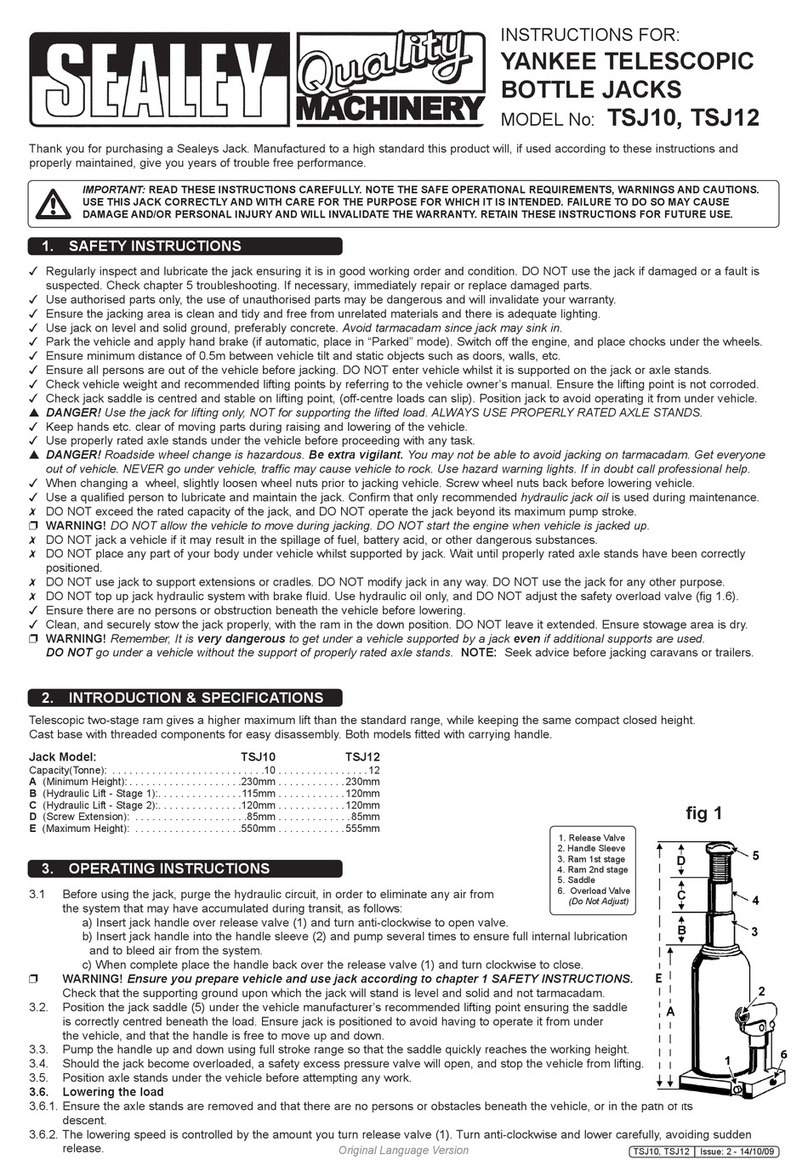
Sealey
Sealey TSJ10 instructions
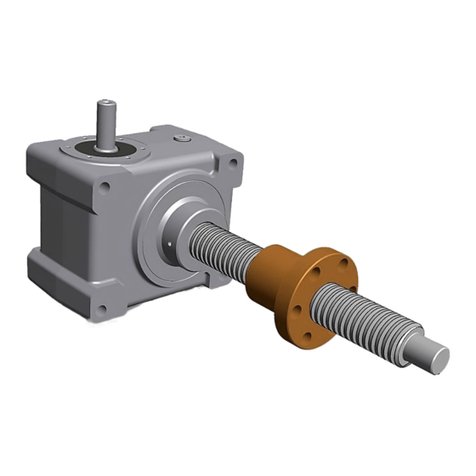
MecVel
MecVel HT-HR Series Handbook

K Tool International
K Tool International KTI63197 owner's manual

BIG RED JACKS
BIG RED JACKS T42002 owner's manual
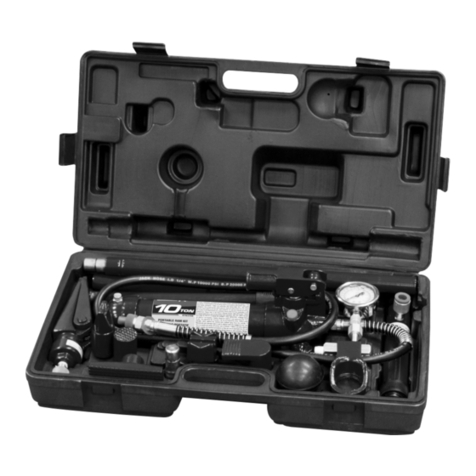
K Tool International
K Tool International KTI63709 owner's manual

Clarke
Clarke Strong-Arm CTJ100 Operating & maintenance instructions

URIAH
URIAH UC200020 quick start guide

Daytona
Daytona DA-15PR Owner's manual & safety instructions
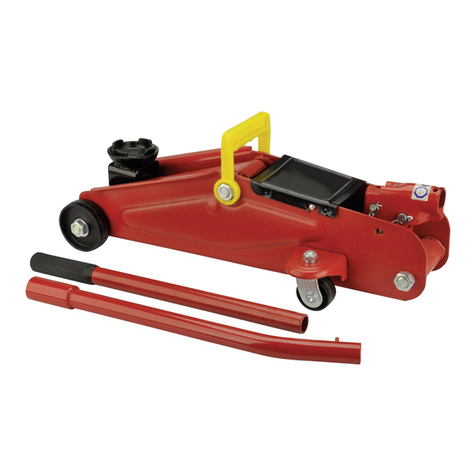
Cartrend
Cartrend 7740014 Original operating instructions
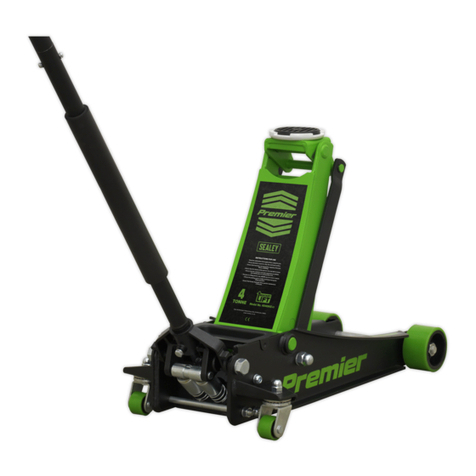
Sealey
Sealey 4040AG instructions
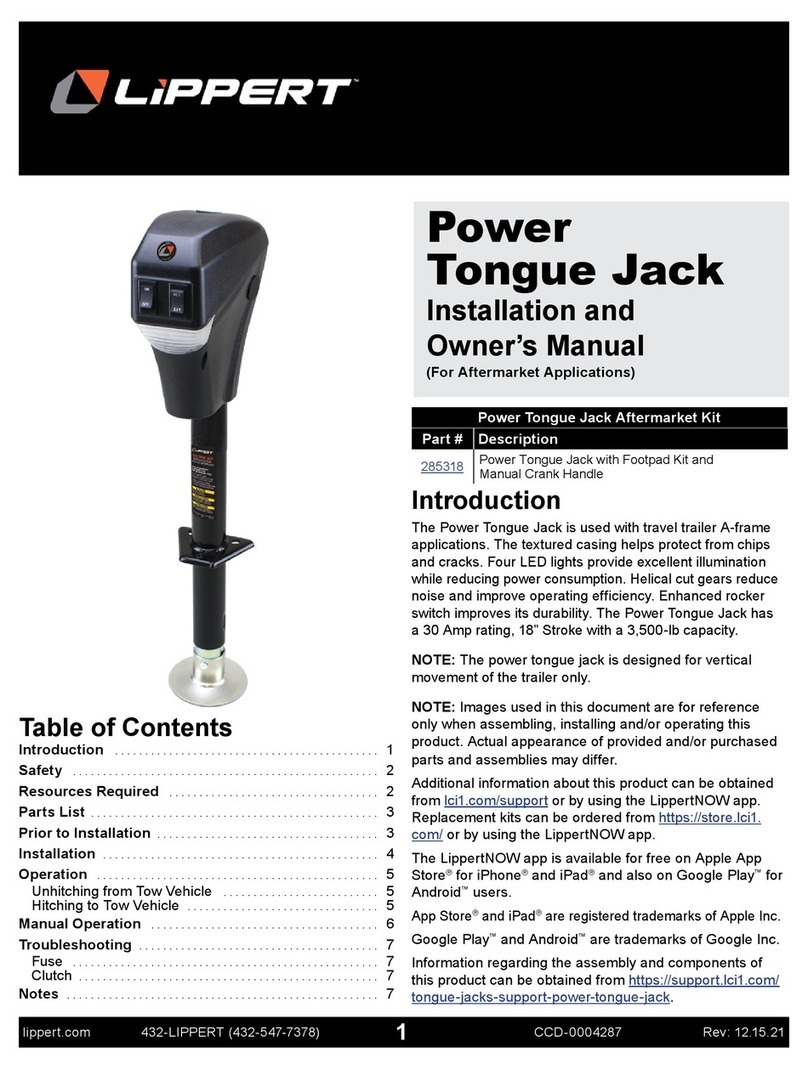
Lippert
Lippert 285318 Installation and owner's manual
